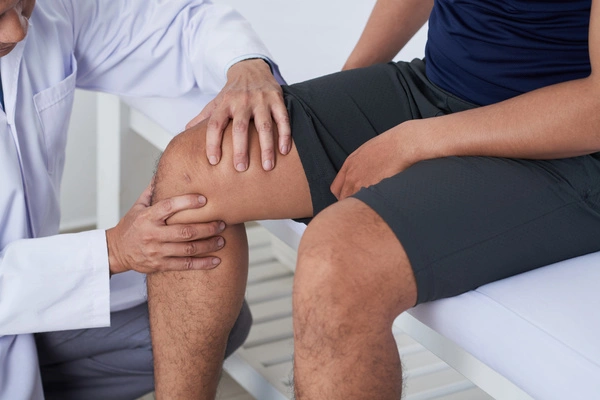Diastasis recti is a condition many people experience, particularly after pregnancy, where the abdominal muscles separate, leading to a weakened core. Diastasis recti treatment is essential for those experiencing discomfort or difficulty with core strength, as untreated diastasis recti can result in ongoing pain and limited movement. This guide will cover the essential steps for effective diastasis recti treatment, from recommended exercises and alternative therapies to lifestyle adjustments that support core health and long-term relief.
What is Diastasis Recti?
Diastasis recti is a condition where the right and left abdominal muscles separate along the midline of the abdomen, causing the belly to bulge or form a gap. Diastasis recti treatment is aimed at closing this gap and restoring the integrity of the abdominal wall. This condition is most commonly associated with pregnancy, but it can also be caused by weight gain, incorrect exercise methods, or genetic predispositions. Symptoms of diastasis recti include a visible bulge along the abdomen, core weakness, back pain, and sometimes even postural issues. Understanding the causes and symptoms of diastasis recti is the first step to successful diastasis recti treatment.
Why Treat Diastasis Recti?
Leaving diastasis recti untreated can lead to further complications, making diastasis recti treatment a priority for anyone affected. Untreated diastasis recti can cause chronic pain, hernias, and decreased core stability. This, in turn, affects daily activities, posture, and overall well-being. Diastasis recti treatment not only helps improve posture and core stability but also relieves lower back pain and restores the body’s natural alignment. Treating diastasis recti can help individuals regain functional strength, which improves both physical and mental wellness.
Core-Strengthening Exercises for Diastasis Recti
When it comes to diastasis recti treatment, exercise is a core component that can gradually bring the abdominal muscles back together. However, it’s essential to follow safe guidelines for exercise to prevent further injury. Exercises such as crunches or sit-ups should be avoided, as they can place undue stress on the abdominal wall. The best exercises for diastasis recti treatment include:
- Pelvic Tilts: Helps engage the lower abdominal muscles gently.
- Transverse Abdominis Activation: A key exercise for core engagement without straining the midline.
- Heel Slides: Works the lower core while controlling the movement of the legs.
- Knee Raises with Belly Breathing: Coordinates deep breathing with core activation.
- Modified Planks and Side Planks: Builds core stability without excessive strain.
These diastasis recti treatment exercises are recommended to be done regularly, with a gradual increase in intensity as the core begins to strengthen. Consulting with a physical therapist can ensure that these exercises are performed correctly and safely.
Additional Treatment Options for Diastasis Recti
Beyond exercises, there are several additional diastasis recti treatment options available for those seeking a more comprehensive approach. Working with a physical therapist is beneficial, as they can guide you on proper form and create a personalised treatment plan. Abdominal binders and support garments can also provide temporary relief by supporting the core, especially during physical activity.
Another effective diastasis recti treatment is massage therapy and myofascial release, which help alleviate pain and relax tight muscles. For those with severe diastasis recti or hernias, surgical options may be considered as a last resort. Consulting a specialist will help determine the best treatment path for each unique case, as diastasis recti treatment can vary based on severity and individual needs.
Lifestyle Modifications for Managing and Preventing Diastasis Recti
Lifestyle adjustments play a significant role in effective diastasis recti treatment and in preventing the condition from worsening. Improving posture, especially during sitting and standing, reduces unnecessary pressure on the abdominal wall. Proper lifting techniques also play a crucial part in diastasis recti treatment, as lifting heavy objects improperly can increase the separation between abdominal muscles. Incorporating breathing exercises, such as diaphragmatic breathing, can also aid diastasis recti treatment by promoting core engagement in a gentle way.
Maintaining a healthy weight is another important aspect of diastasis recti treatment, as excess weight can strain the abdomen and increase muscle separation. These lifestyle modifications support a balanced approach to managing and healing diastasis recti, ensuring that both physical activities and daily habits promote long-term core health.
Preventing Diastasis Recti During and After Pregnancy
For those who are pregnant or planning a pregnancy, preventive diastasis recti treatment techniques can be beneficial. Engaging in safe, core-friendly exercises throughout pregnancy, such as pelvic tilts and side planks, can help maintain core strength. Using belly support bands during pregnancy can also reduce strain on the abdominal wall. Postpartum core rehabilitation is a crucial part of diastasis recti treatment, as gentle core exercises help to bring the abdominal muscles back together safely.
Working with a healthcare provider post-pregnancy can offer the support and guidance necessary to begin core rehabilitation. For effective diastasis recti treatment, postpartum exercise routines should be carefully planned to avoid excessive strain, ensuring that new mothers can strengthen their core while preventing further separation.
Takeaway
Diastasis recti treatment is essential for those experiencing symptoms of abdominal separation, as it addresses both the functional and aesthetic aspects of the core. By consistently incorporating core-strengthening exercises, considering additional treatments, and making key lifestyle adjustments, individuals can effectively treat and manage diastasis recti. For the best results, it’s important to approach diastasis recti treatment with patience and dedication. Consulting with professionals, including physical therapists and healthcare providers, ensures a safe and effective journey toward recovery and pain relief. Take control of your core health with diastasis recti treatment and embrace a stronger, more comfortable life.






